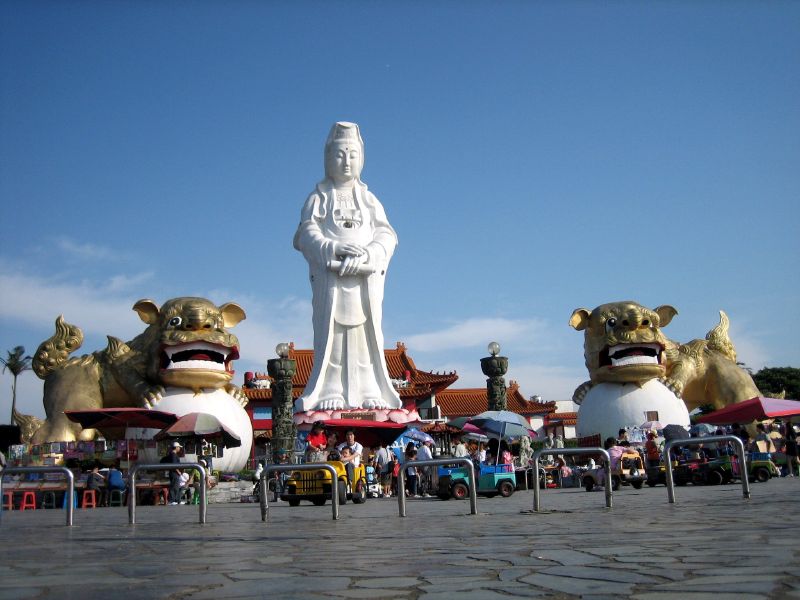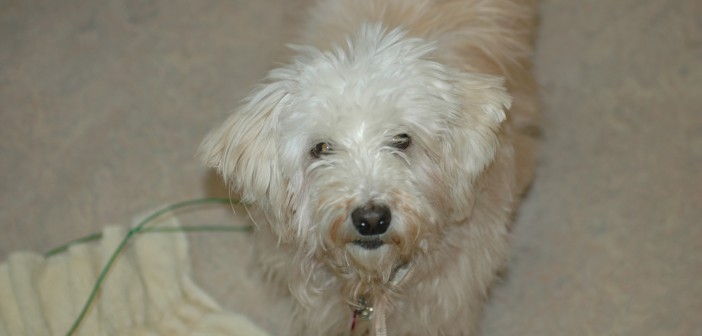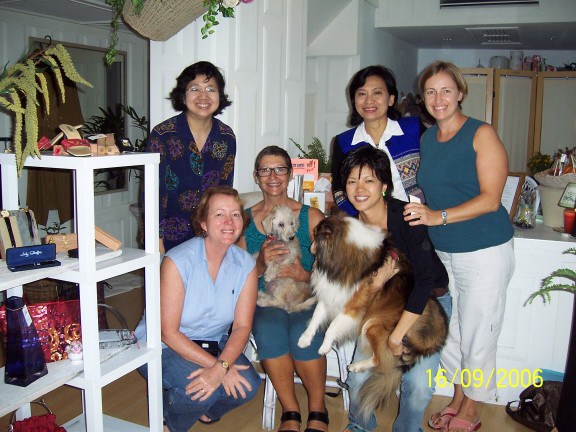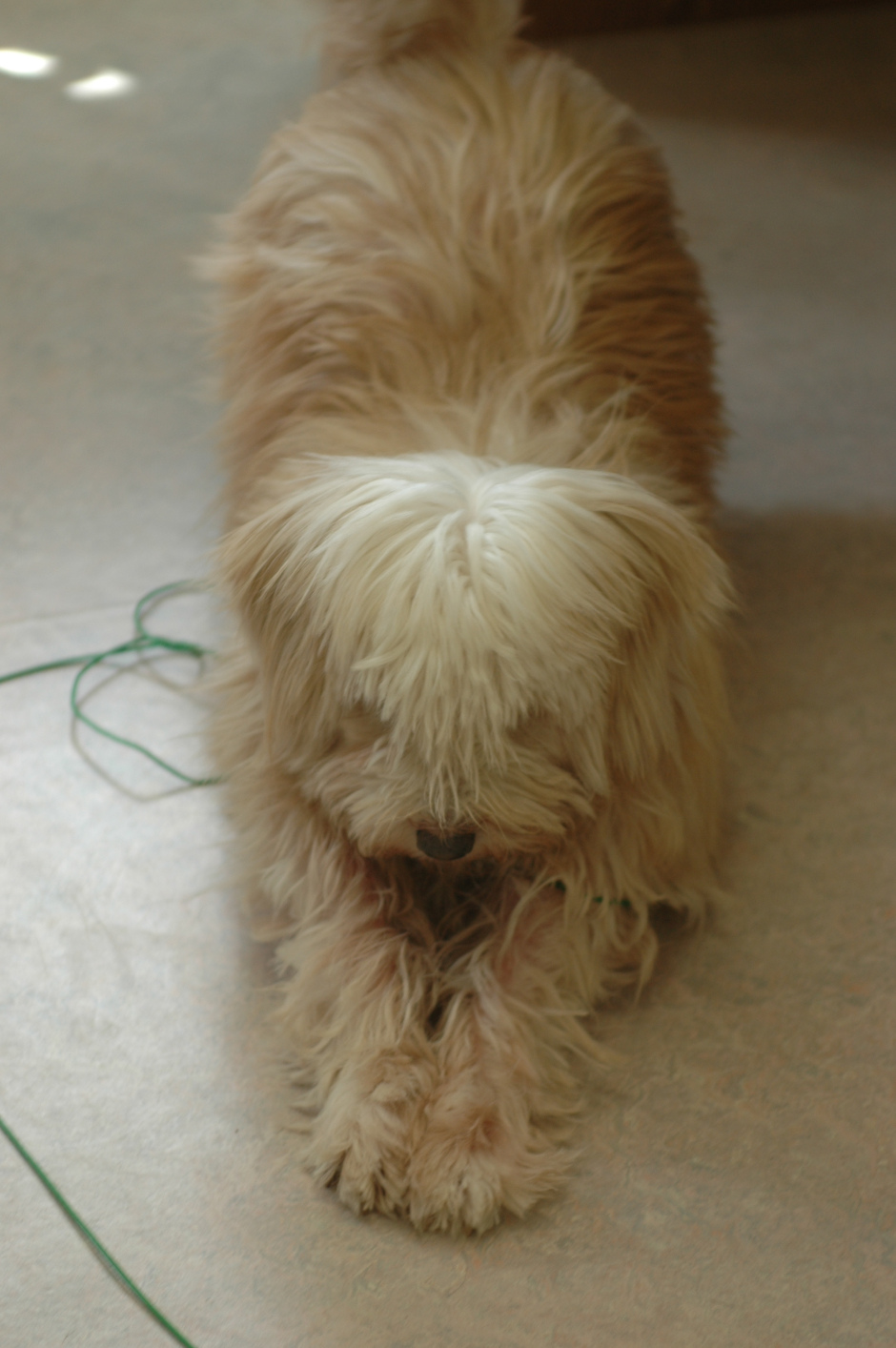(previously published on Neon Observatory)
On December 26, 2004, a tiny dog was swept out to sea, carried by the waves of the deadliest tsunami in recorded history. Paddling desperately against the current and gasping for air between engulfing waves, she strained her ears for the voices of her human guardians. Though she hoped that they would soon arrive to rescue her, they never did. Undoubtedly they too were battling against the waves, struggling simply to survive themselves.
Against all odds, the little dog somehow managed to stay afloat and make it back to shore on her own. It cannot be known whether her people were as fortunate, or who they even were. They might have been Thai, or perhaps European expatriates living in Phuket, amongst whom poodle/Shih Tzu mixes such as herself were popular. Or perhaps they were Buddhist monks or nuns, whose monastery she guarded from demons and criminals, true to the Shih Tzu half of her pedigree. Whoever they were, they instilled in her both a love of expensive dog food, and a deeply held animosity toward men with swords. And sadly, whether they were lucky enough to survive, or met their ends at sea alongside 280,000 other human victims, she would never see them again in her current lifetime.
 For the next six months, the little dog wandered the streets by herself, eating garbage to survive and growing ever more emaciated. She developed severe mange, not only losing nearly all her once luxurious white fur, but becoming so scaly and wrinkled that she came to resemble a reptile more than a mammal. Despite her miserable state of health, she still did not lose her spirit, and when she was eventually captured and brought to the city pound of Phuket, she wasted no time planning her escape. As it happens, she chose exactly the right moment to try and sneak out the front gate, just as a family of Americans was entering. These Americans happened to be animal advocates, and were visiting Thailand to meet with local activists and inspect recovery efforts in the aftermath of the tsunami. The woman, Kim, was so impressed by the little dog’s indomitable attitude, and saddened by her pitiful appearance, that she volunteered to adopt her, agreeing to sponsor the cost of her healthcare until such time as she could be transported to the United States.
For the next six months, the little dog wandered the streets by herself, eating garbage to survive and growing ever more emaciated. She developed severe mange, not only losing nearly all her once luxurious white fur, but becoming so scaly and wrinkled that she came to resemble a reptile more than a mammal. Despite her miserable state of health, she still did not lose her spirit, and when she was eventually captured and brought to the city pound of Phuket, she wasted no time planning her escape. As it happens, she chose exactly the right moment to try and sneak out the front gate, just as a family of Americans was entering. These Americans happened to be animal advocates, and were visiting Thailand to meet with local activists and inspect recovery efforts in the aftermath of the tsunami. The woman, Kim, was so impressed by the little dog’s indomitable attitude, and saddened by her pitiful appearance, that she volunteered to adopt her, agreeing to sponsor the cost of her healthcare until such time as she could be transported to the United States.
And so, starting that day, the little dog began to be tended once more, and was slowly nursed back to health with quality food, baths, and treatments for mange. It seemed a far cry from the comfort she had known with her previous guardians, whom no one could ever replace in her heart, but nonetheless she was grateful for such kindness and made many new friends among the shelter staff and volunteers. Her skin gradually lost its scaliness and her fur began to regrow in sparse clumps, but even after a year and a half she still looked more like a badly taxidermied museum specimen than a living dog. Even so, it was decided she was ready to embark on her next adventure, a voyage across the Pacific to her new home deep in the forest of Whidbey Island, Washington.
Whatever name her original family had given her, it had been lost with the tsunami, never to be spoken again. Perhaps in an effort to redeem this loss, Kim and her son Wolf bestowed on her a seemingly endless number of new names and nicknames. The first was Lawan, meaning “beautiful” in Thai, given despite her reptilian appearance in the hope that she would become beautiful once more. Because she acted so playful and silly, they soon decided she lived in La La Land, and nicknamed her “Lala.” Lala became “Dada,” after the Dada school of art which rejected rational meaning in favor of nonsense, and sure enough Dada gave rise to a myriad of nonsensical variants: “Deedadee.” “Deedadeeda.” “Deedlaranthus.” “Dee de la Ranth.” “Deedaskin.” “Dadaraskin.” Lawan alone came to possess more titles than all the other animals in the household combined, and the list of names never stopped growing.
True to her official name, Lawan did eventually regain her beauty, her white fur growing out until she resembled a shaggy sheep dog, at which point her groomer Melissa decided to make a proper poodle out of her by bestowing a new stylish haircut every week. “Dada” turned out to be something of a misnomer, however, for although her actions often seemed ridiculous, in fact they concealed a remarkable depth of character. While her guardians at first dismissed her as a “shallow” dog, interpreting her begging for visitors’ attention as a plea to be taken to a more luxurious home, Lawan would in fact howl mournfully whenever they left the house for any extended period, as Wolf discovered while Kim was out of town. Moreover, while she thrived on the adoration of visitors, there were some boundaries only family were allowed to cross. Any guest who attempted to pick her up, for instance, would be loudly scolded and shunned for such a brazen affront to her dignity.

Kuan Yin, the bodhisattva of mercy, guarded by two giant lion dogs, mythologized versions of the Shih Tzu. Keelung, Taiwan. (photo credit: Prince Roy)
Not only was Lawan loyal to her guardians, she was caring and protective as well. When Kim suffered a traumatic fall from a kitchen stool, Lawan was the first dog to arrive and comfort her. When anyone was perceived as a threat, she was always the most eager to attack. On one occasion, she drove off a would-be burglar with her frenzied barking. On another, she had to be physically restrained from going after a stranger with a sword on his way to fencing class, giving the distinct impression that she had faced attackers with swords before – perhaps masked bandits or evil spirits who menaced the monastery she lived at before. For her courage and devotion, she earned the nickname of “Dadasattva,” a reference to the bodhisattvas of Buddhism, enlightened beings who postpone their own nirvana to protect and minister to others.
Though in her bravery and loyalty Lawan manifest the virtues of an ideal dog, her small size – lighter in weight than the household’s largest cat – prevented her from being recognized as such by the other dogs. They seemed unable to decide if she was a perpetually youthful puppy or a strange species of shaggy rat, inspiring the nicknames of “Ratling” and “Yak Rat.” But while she lacked status in the pack hierarchy, this actually brought certain privileges, such as getting away with behaviors they would never tolerate from another dog. These ranged from displays of dominance to violent assaults, triggered without warning and usually directed at the offending dog’s throat. Had she been a larger breed, the “Crocodada” (as she also came to be known) would have been far more dangerous than any pit bull.
Though adorable in appearance and robust in strength, Lawan’s health never did fully recover from her days on the street, and she maintained her vigor only through a regular regimen of antibiotics, antifungal creams, and baths. It was likely due to the stress on her immune system during and after the tsunami that she eventually developed diabetes, for which she required insulin shots every morning and night. Because of the risk of her going into hypoglycemic shock, it was crucial to ensure that she was properly fed before each injection, and Lawan used this to her strategic advantage, often refusing the food initially offered and forcing Kim or Wolf to prepare multiple new meals until she got exactly what she wanted. Her need to be constantly monitored brought other privileges as well, such as getting to ride in the car whenever either human left the house, for which she earned yet another nickname: “the Copilot.”
While Lawan’s endless demands and medical needs were time-consuming and often irritating, they also made her the star of the household and focus of each day’s schedule, and a central part of both Kim’s and Wolf’s lives. And so it was that when she became fatally ill, vomiting until she started to pass parts of her own internal organs, it took an excruciating effort for them to bring themselves to euthanize her. On June 26, 2014, Lawan spent her final day wandering the house and yard, enjoying the sunlight and company of her fellow dogs and cats, despite frequent collapses and vomiting spells. She relished a final car ride on the way to the vet’s office. And she passed away with a smile on her face, panting happily in the arms of her human guardians.
Lawan now lies buried beside the front porch, facing outward in the posture of a lion dog, a perpetual guardian to her household and the people and animals who loved her. She was a courageous dog with an extraordinary life story, and will be forever missed.
Goodbye Lawan, dog of a thousand names. As in this life you overcame the waves of the Indian Ocean, may you now safely navigate the ocean of rebirth; and as in this life you were known as Dadasattva, may you travel far upon the bodhisattva path in your life to come. May your soul be blessed, dear Lawan, and may we all someday meet again, before the end of time.









2 Comments
A beautiful tribute to a beautiful soul.
So beautiful. What an amazing spirit.